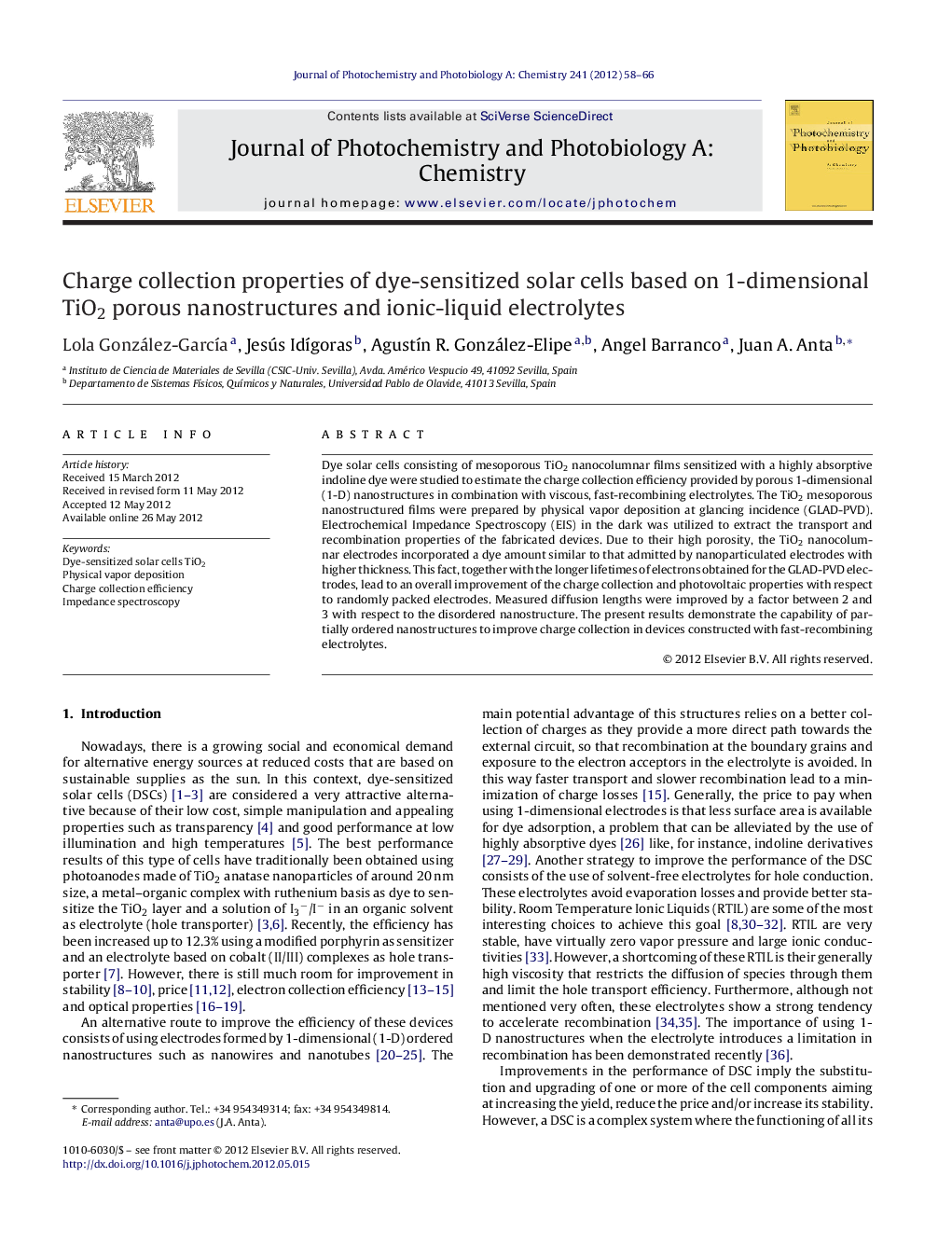| Article ID | Journal | Published Year | Pages | File Type |
|---|---|---|---|---|
| 26959 | Journal of Photochemistry and Photobiology A: Chemistry | 2012 | 9 Pages |
Dye solar cells consisting of mesoporous TiO2 nanocolumnar films sensitized with a highly absorptive indoline dye were studied to estimate the charge collection efficiency provided by porous 1-dimensional (1-D) nanostructures in combination with viscous, fast-recombining electrolytes. The TiO2 mesoporous nanostructured films were prepared by physical vapor deposition at glancing incidence (GLAD-PVD). Electrochemical Impedance Spectroscopy (EIS) in the dark was utilized to extract the transport and recombination properties of the fabricated devices. Due to their high porosity, the TiO2 nanocolumnar electrodes incorporated a dye amount similar to that admitted by nanoparticulated electrodes with higher thickness. This fact, together with the longer lifetimes of electrons obtained for the GLAD-PVD electrodes, lead to an overall improvement of the charge collection and photovoltaic properties with respect to randomly packed electrodes. Measured diffusion lengths were improved by a factor between 2 and 3 with respect to the disordered nanostructure. The present results demonstrate the capability of partially ordered nanostructures to improve charge collection in devices constructed with fast-recombining electrolytes.
► The use of 1-dimensional nanostructures is very appealing due to possibility of providing a more direct path for charge collection. ► Porous nanocolumns, made with physical vapor deposition methods can be very useful to make good cells. ► They are very efficient to simultaneously optimize light harvesting and charge collection with fast-recombining electrolytes.
